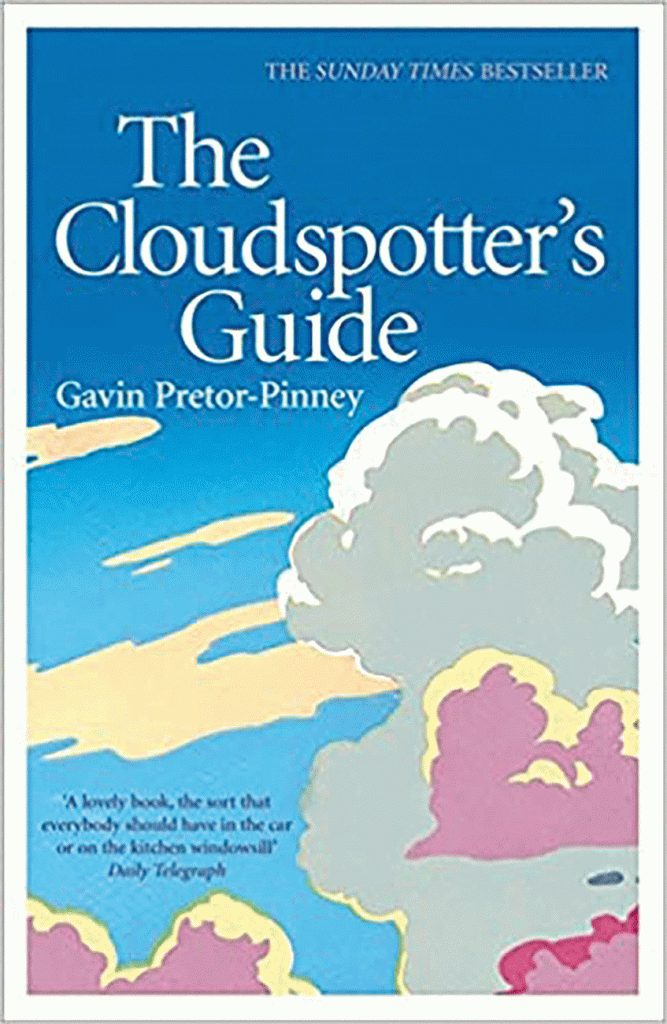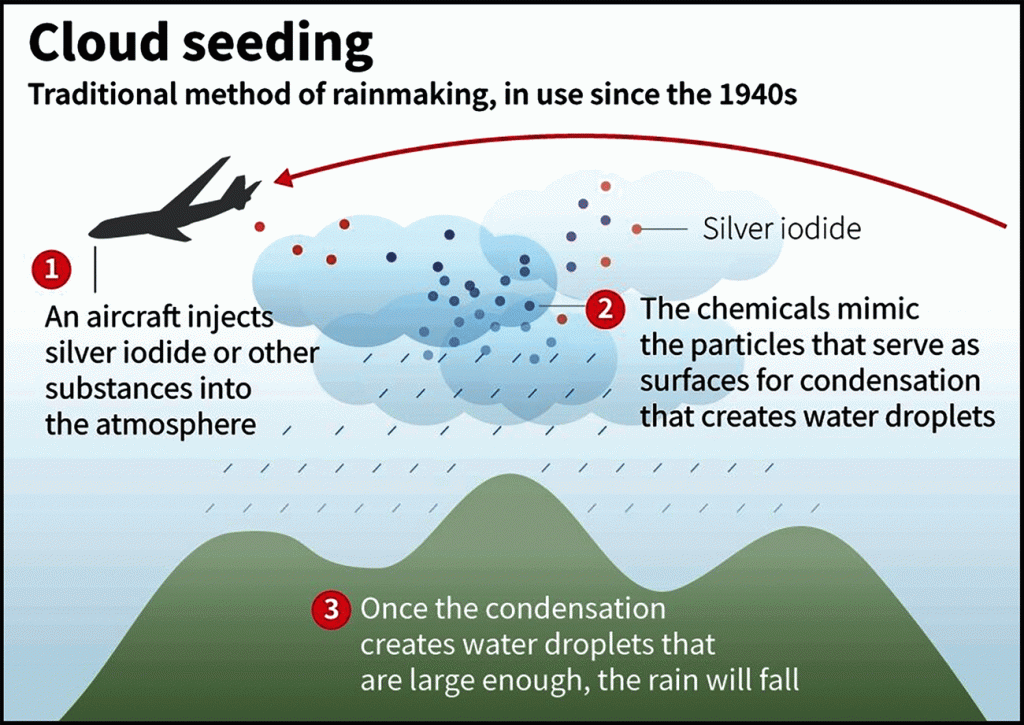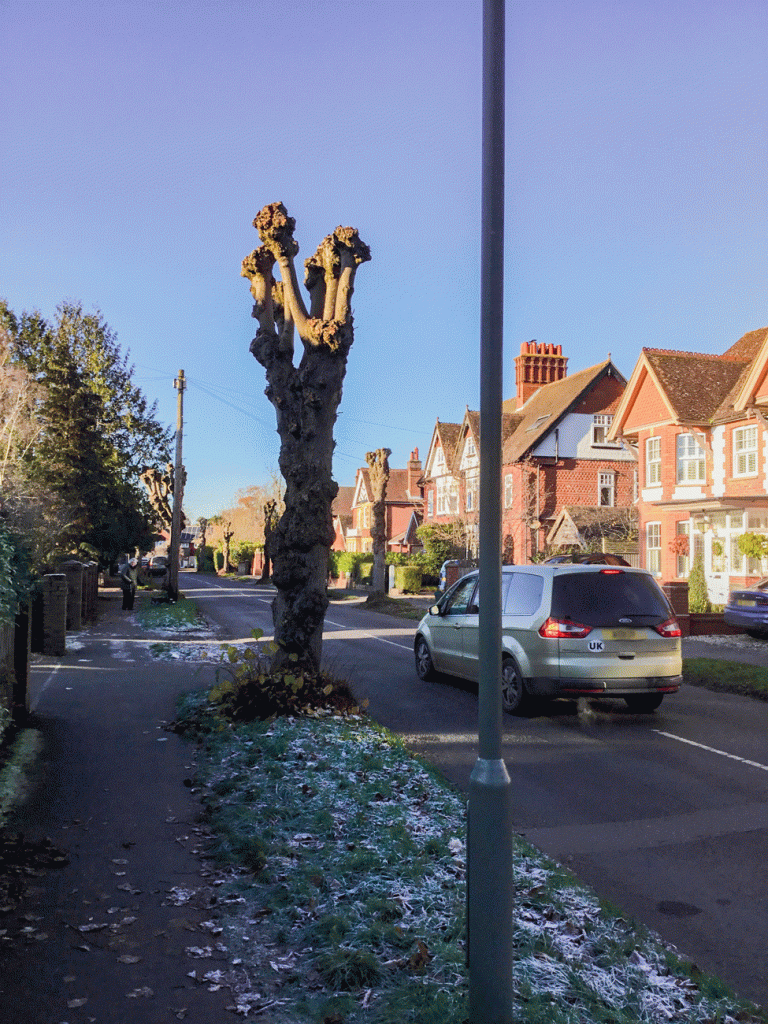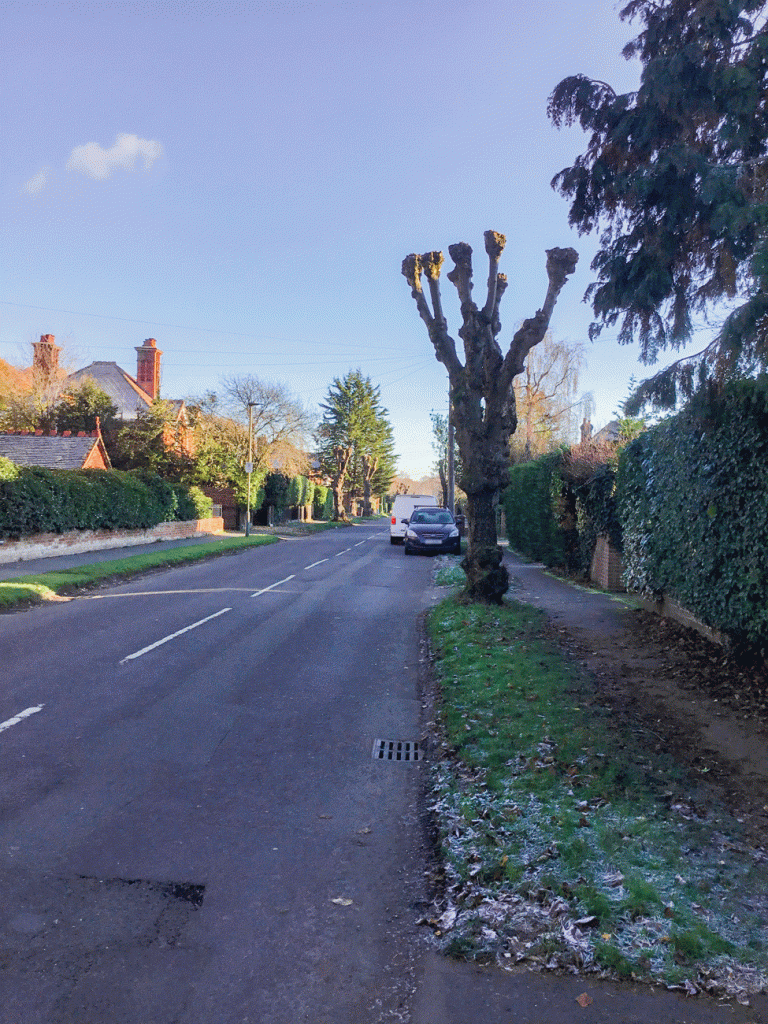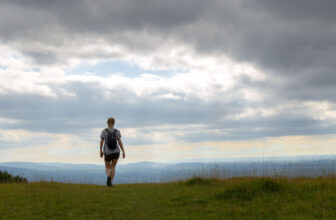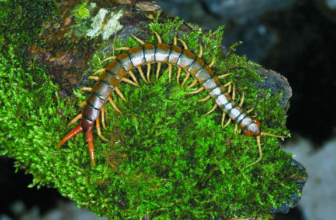
Bosham is one of our favourite places. We sit on a bench, watch the tides, and admire the clouds. As you can see from the photograph we took, they can be the glory of a view. One might think that the skies are the final ‘wild frontier’ with the least sign of human interference; if you discount contrails which some days utterly alter the skies. Someone recently called them ‘bastard clouds’.
It was a small item in the newspaper recently which reminded me of human weather manipulation. Apparently the Chinese have been working again on ‘cloud seeding’ as a way to engineer more rain for their parched and increasingly unproductive land. This took me right back to the 1970s when ‘cloud seeding’ made big news. Very briefly, two scientists in the USA discovered that if particles were introduced into a cloud, most would act as nuclei and allow moisture to crystallize and then fall as rain. Dry ice produced the best results. The aim of the scientific work was said to increase rain over drought regions, reduce damaging hailstorms, dissipate fog at airports and even redirect hurricanes so that they were less destructive. All good aims but perhaps inevitably the research took a dubious turn. The experiments, centered initially at a meterological institute were moved to the US War department. This was the time of the Vietnam War.

A whistleblower revealed that cloud seeding was being used strategically and there was a huge public outcry. In 1977, under the presidency of Gerald Ford a treaty was signed in Geneva by the USA, USSR and forty other nations to prevent weather manipulation from being used for the purpose of warfare. The treaty still stands but apparently it is worded so vaguely that it is hard to enforce – and perhaps you will have noticed that there was a significant abstainer from the list of countries signing the treaty.
If the above interests you – or you just love clouds, as I do, I recommend The Cloudspotters Guide by Gavin Pretor-Pinney. It is a beautiful book, generously illustrated and packed with fascinating information. You will learn so much – but best of all, start to look upwards and find a whole new world of wildness. A good New Year’s resolution!
When the part of Cranleigh where I live was initially laid out for housing by Stephen Rowland, beginning in the 1890s, trees were planted to line the new roads, in what was called the Woodlands Estate and included Mead and Mount Road. I do not know if part of the plan right from the beginning, was to pollard the trees regularly to stop them getting too big, which being limes, were bound to.
Pollarding is a very old practice – part of landscape management and initially, as with coppicing, to produce timber and wood for fuel. This is done on a five year cycle – and interestingly, each time it is done, it re-sets the life clock of the tree – which lives longer than it would if it were not pollarded. The trouble is that the trees, when just done, look so awful. They have been described as ‘mutilated’ or ‘amputated’. It then takes about two years for the trees to recover a pleasant shape, one or two years looking very nice and one year having grown too big for their situation and interfering with the power lines. And then it is time to do them again. This regime means that the limes will not flower and that is a pity as the scent is delicious. It is noticeable that where a tree becomes unhealthy round here, it is felled and nothing is put in to replace it. Perhaps the eventual aim is to phase them out? The lime outside my house is now undoubtedly too big and as the roots below tend to mirror the canopy above, they are now getting very close to my house. I am torn between concern for my house and the beauty – for at least three years, anyway – of a lovely tree.
All best wishes for a healthy, peaceful New Year. Come and visit our conservation site, or if you can, join the team of volunteers. Details below:
Beryl Harvey Fields is Cranleigh’s nature conservation site. We need volunteers.
For further information: visit our conservation site in Cranleigh – or better, volunteer.
Contact Philip Townsend at: townsendp99@gmail.com or details.

